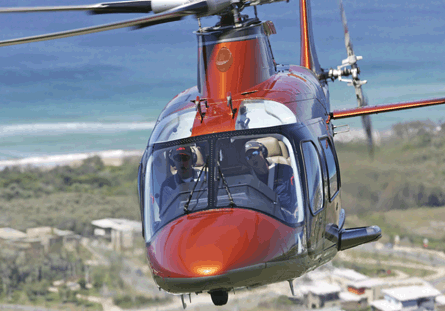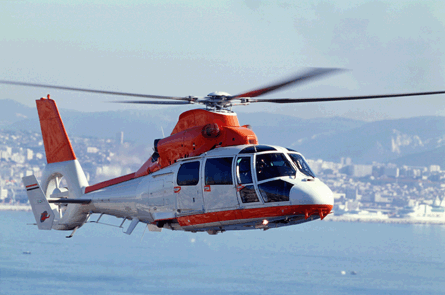The civil helicopter market is undergoing a tough time. Sales have slumped in the past year or two and the near-term outlook remains pessimistic.
Civil helicopter sales had dipped even before the world tipped into a full-blown economic recession, which had a significant effect on sales in the VIP and corporate sector. And as the oil industry (which has always been the main driving force behind growth in the civil rotorcraft sector) contracted, sales slowed further.
In its twelfth Turbine-Powered Civil Helicopter Purchase Outlook Honeywell outlined a decline in sales in 2009 (and predicted a 20% reduction in five-year purchase plans), and forecast a further decline in deliveries in 2010 and 2011, with surveys indicating a further 26% fall in five-year new helicopter purchase expectations in North America and a 40% reduction in Europe.
Market growth is being constrained by continued poor economic growth prospects in key markets, and tight credit leading to fewer orders, coupled with high inventory levels of used current production models for sale, competing with "new off the line" machines.
 |
|---|
© AgustaWestlandAgustaWestland has established a joint venture with AVIC subsidiary Jiangxi Changhe for local assembly and support of the AW109 Power |
Although sales of civil helicopters measured in terms of numbers of airframes may sometimes exceed military helicopter annual sales, the total value of such sales remain much smaller, and will remain so, even when the sector eventually experiences the "upturn" predicted by many experts and analysts.
Civil helicopters tend to be smaller, lighter, and are less "stuffed" with high-cost avionics, sensors and systems, and civil helicopter sales include a relatively high proportion of single-engined (and even piston-powered) machines.
Thus while Rolls-Royce predicts that the civil market will account for 10,300 of the 16,400 sales of turbine helicopters over the next 10 years, the engine-maker acknowledges that those machines will account for just $38 billion of the $108 billion total value.
Larger, more expensive classes of helicopter have naturally been hardest hit by the slowdown, although surveys suggest that when times improve, many existing operators will "move up", especially from light twins to intermediate and medium twins.
Manufacturers hope that an underlying need to replace older helicopters in service today (a surprising proportion of which date back to the 1970s) will underpin the kind of longer-term demand outlined by Rolls-Royce, even without any fundamental market growth. Fundamental growth is predicted, at least in the long term, although Honeywell projects flat overall deliveries of new civil use helicopters during the five-year period 2010-14.
Market growth will, in part, continue to be driven by the demands of the offshore oil and gas industry, but especially by demand in emerging markets - particularly in the Asia-Pacific region - rather than in the traditional helicopter markets that now dominate.
In the USA, where civil helicopter sales were once dominated by local manufacturers, AgustaWesland and Eurocopter have made massive inroads. However, the helicopter markets in North America and Europe are mature, and, beyond fleet replacement, there is relatively little scope for spectacular levels of further growth.
 |
|---|
© AVICOn 18 March, Avicopter, the helicopter division of AVIC, announced that it had successfully flown the first prototype of the AC313, which it claimed was China's first indigenous large helicopter. |
Nor do many analysts anticipate significant near-term growth in demand for helicopters in Africa, despite the obvious longer-term potential. In Central and South America, growth has tended to be led by the military, police and parapublic sectors, but the region holds out great promise for the helicopter manufacturers, especially in Argentina, Bolivia, Brazil, Chile and Mexico.
The huge potential markets for rotorcraft in China and India have been recognised for years. Some believe that the reforms to China's air traffic control system that would be necessary to allow a real expansion in private and business aviation remain as far away as ever, and that for the near term, demand in China will be from the police, parapublic and oil and gas sectors.
But there is clearly massive potential in China where there is a suppressed demand for as many as 2,000 helicopters according to some analysts, rising to 10,000 by 2020, with a total market value of as much as $100 billion.
The big manufacturers have all made great efforts to position themselves for the time when helicopter sales do finally take off in China. AgustaWestland has established a joint venture with AVIC subsidiary Jiangxi Changhe for local assembly and support of the AW109 Power, which is known locally as the CA109, while Eurocopter has established a full-blown subsidiary, Eurocopter China, and has sold 150 helicopters in China.
The first major Western helicopter manufacturer to establish a joint venture in China was Sikorsky, which set up Shanghai Sikorsky as a local sales and support organisation in 2003. In 2008, AVIC subsidiaries Changhe Aircraft Industries and Shanghai Xinsheng Aviation Industry Investment and Development became shareholders in Shanghai Sikorsky, and Sikorsky now sources some components for its S-76 and S-92 helicopters in China.
China does have an indigenous helicopter industry, and this will naturally play a part in meeting local demand. Although its main products have been licensed copies of Eurocopter and Russian types, real efforts have been made to "grow" indigenous design and development capabilities, especially in the field of heavylift helicopters, following the success of the Mi-26 in China, especially following the 2008 Wenchuan earthquake.
On 18 March, Avicopter, the helicopter division of the China Aviation Industry Corporation, announced that it had successfully flown the first prototype of the 27-seat, 13t AC313, which it claimed was China's first indigenous large helicopter.
The AC313 is clearly a modernised local derivative of the Aerospatiale Super Frelon, and is reportedly powered by a trio of Pratt & Whitney Canada PT6B-67A engines. The Super Frelon was itself built locally as the Harbin Z-8, with the later Z-8F version (first flown in 2004) using Pratt & Whitney engines.
 |
|---|
© EurocopterPawan Hans Eurocopter AS365N3 Dauphin |
Although there are fewer obstacles to private and business aviation in India, and although the first civil helicopter flew in India in November 1953, the growth of the civil helicopter market in India has been relatively modest and slow-paced until the past four or five years.
The rotorcraft industry in India was really kick-started in 1985 when the Indian government founded the Helicopter Corporation of India. Quickly renamed as Pawan Hans Helicopters, the company remains India's national helicopter company, 78.5% owned by the government and 21.5% with the ONGC (India's Oil and Natural Gas Corporation, itself 74.4% owned by the government).
Pawan Hans was established to provide helicopter support to the offshore oil/gas sector but also for providing services in remote areas (and between islands) as well as charter services and operating to promote tourism, and had a fleet of 42 helicopters.
As India entered the new millennium, it had just over 100 civil-registered helicopters. Today, 10 years later, there are about 284 - although this is still a modest total for a nation with a population that tops one billion. These helicopters do, however, carry out a wide variety of roles, with 29 in use by government agencies, and with about 54 of them supporting the energy sector (including power line inspection, as well as oil and gas support). The rest are used by HEMS/air ambulance, charter and air taxi, corporate/VIP, electronic news gathering and heli-tourism operators.
Efforts are under way to overcome further obstacles to growth, which include the inappropriate application of fixed-wing traffic rules to helicopters, lack of infrastructure (helipads, etc) and high costs - including high taxes on fuel, and high charges - for example for radio navigation facilities.
Organisations such as the Rotary Wing Society of India are energetically promoting the versatility and social value of the helicopter, and are improving awareness of rotorcraft in India's air traffic management organisations. The society is also looking ahead, and is already pressing for the identification of sites for "vertiports for futuristic tilt-wing rotorcraft".
Although India's Hindustan Aeronautics has undertaken some helicopter programmes, most of these have been military, and though there is a civil variant of the Dhruv advanced light helicopter, this has had relatively little commercial success, with just a couple of dozen ordered by state governments, India's home ministry, the ONGC, the Geological Survey of India, and the National Disaster Management Authority.
Any near-term growth in the Indian civil helicopter market will thus be driven by imported or licence-assembled rotorcraft. To facilitate this, India's Tata Group has already signed agreements with major Western rotorcraft manufacturers. Tata Advanced Systems is working with Sikorsky to manufacture aerospace components in India, and is assembling cabin subassemblies for the S-92. The Indian company has also signed a memorandum of understanding with AgustaWestland for the establishment of a final assembly line for the AW119 Koala utility helicopter.
Although emerging markets seem most likely to provide growth for civil rotorcraft, all of that could change if one or more of the "disruptive technologies" now under development were to be result in a new generation of "game-changing" commercial rotorcraft. If and when the civil tiltrotor reaches the marketplace, the focus of activity may well shift back to the USA and Europe.
Source: Flight Daily News













